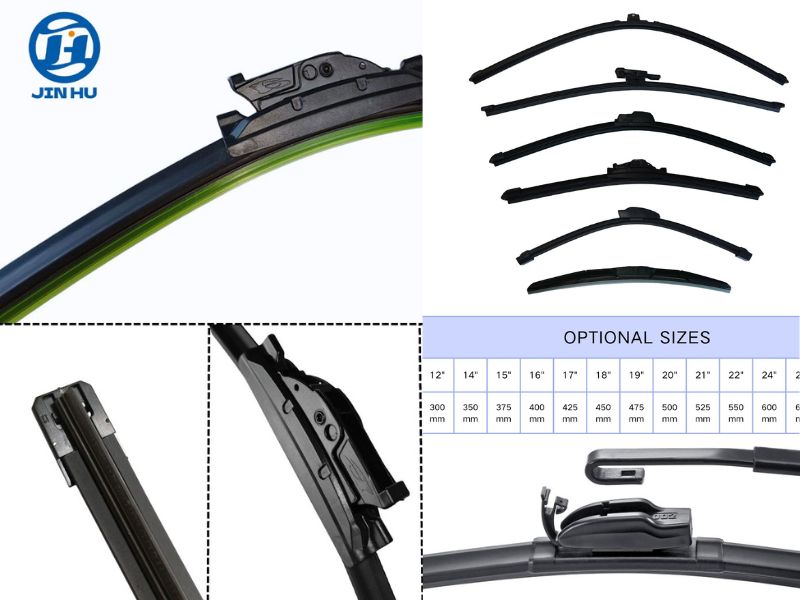What Are You Looking For?

Windshield wipers may seem like simple components of a vehicle, but they play an essential role in ensuring safe driving conditions, especially during rain, snow, or other challenging weather. Their primary function is to maintain clear visibility by effectively removing water, debris, and snow from the windshield. Let’s explore the anatomy, functionality, maintenance, and importance of windshield wipers in greater detail.
Understanding the key components of windshield wipers helps appreciate their complexity:
Wiper Blades: Made primarily of rubber or silicone, these are the parts that directly contact the windshield. High-quality blades are designed to flex and adapt to the glass surface, ensuring effective wiping without leaving streaks.
Wiper Arms: These metal arms are connected to the wiper blades and pivot from a central point, moving the blades across the windshield. They come in various lengths and styles, depending on the vehicle design.
Wiper Motor: The electric motor powers the wipers, driving them at varying speeds. Most modern cars have motors that can accommodate multiple settings, including intermittent wiping.
Linkage System: This mechanism connects the wiper motor to the arms. It translates the motor's circular motion into the back-and-forth movement of the wipers.
Washer System: Many vehicles feature a windshield washer system that sprays a cleaning fluid onto the glass, helping to clear dirt and grime, especially when combined with the wipers.
When the driver activates the wipers, the motor engages, causing the linkage to move the arms in a sweeping motion. Most systems allow for variable speeds, enabling drivers to adjust the wiper action based on the intensity of the precipitation. Some vehicles are equipped with advanced features such as rain sensors, which automatically detect moisture on the windshield and activate the wipers as needed.
Like all vehicle components, windshield wipers require regular upkeep to function correctly. Here are some detailed maintenance tips:
Inspect Wiper Blades: Check for signs of wear such as cracking, splitting, or hardening of the rubber. These conditions can reduce wiping efficiency and lead to streaks on the windshield.
Clean the Blades and Windshield: Dirt and debris can accumulate on both the blades and the glass. Use a soft cloth or sponge with a mild cleaner to wipe them down, ensuring optimal performance.
Replace Wiper Blades: Generally, wiper blades should be replaced every six to twelve months. In harsher climates or frequent use, consider replacing them more often.
Check the Washer Fluid: Ensure that your windshield washer fluid reservoir is full and that the sprayers are functioning properly. Clear visibility is enhanced not only by the wipers but also by the cleaning fluid.
The importance of functional windshield wipers cannot be overstated. Impaired visibility due to malfunctioning wipers can lead to dangerous driving conditions. According to safety studies, reduced visibility is a significant contributing factor in many vehicle accidents, particularly during rainstorms or winter weather. Regular checks and timely replacements are crucial for maintaining a safe driving environment.
Advancements in wiper technology have introduced features that enhance performance and convenience:
Hybrid Blades: Combining the benefits of traditional rubber and beam-style blades, hybrid blades offer better performance and durability.
Aerodynamic Designs: Modern wiper designs focus on reducing wind lift, allowing blades to maintain better contact with the windshield at higher speeds.
Heated Wipers: Some vehicles now feature heated wiper blades or areas to prevent snow and ice buildup, ensuring clear visibility in winter conditions.
Windshield wipers, though often taken for granted, are vital components of vehicle safety. Regular maintenance and timely replacement can help ensure they function correctly, allowing drivers to navigate safely through rain, snow, and debris. By understanding the mechanics of windshield wipers and appreciating their significance, drivers can better protect themselves and others on the road. Keeping your wipers in top condition is not just about convenience; it’s a crucial step toward safer driving.